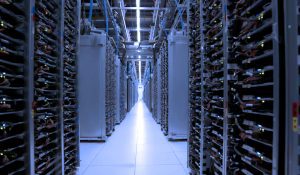The global pandemic has challenged businesses around the globe with many unforeseen circumstances. In this series, I will discuss how Schneider Electric has been innovating our business strategy to address these challenges to keep our operations running sustainably to minimize impacts on our customers. An important part of this is our ‘multi-hub’ strategy. We hope you may find these ideas helpful for your own operations.

How COVID-19 has affected business continuity
Since early 2020, the COVID-19 pandemic has affected almost every business, institution, and individual in a massive, sometimes catastrophic way that we have never experienced before.
In my career, I have been responsible for many aspects of supply chain management, including procurement, logistics, industrialization, and supply chain strategy.
From my perspective, it is easy to see that the conditions caused by the pandemic have created a huge risk for many companies, especially those with industrial manufacturing operations. This risk is more serious than any we have seen in the past 20 years, both in severity and scale. For any company, it is not just a slowdown or a minor impact on sales; and rather, it is a matter of business continuity and survival.
Multi-hub: business resilience through innovation
Schneider Electric has implemented several best practices representing a complete, end-to-end approach in response to these challenges. In this post, I will briefly describe one of the important parts of this strategy: multi-hub.
Five to ten years ago it was common for companies to use a centralized/globalized mode of research and development (R&D) with continuous engineering. In that structure, each redesign and modification requires validation from one central R&D center, typically taking a minimum of six months to a year for testing and qualification. This traditional mode of operation lacks the agility and speed for redesign and switching to alternative materials, parts, and suppliers when required.
Fortunately, our group CEO and division’s EVP had the vision to start us on a transformation journey to a multi-hub strategy a few years ago. We moved from centralized R&D, offer management, industrialization, and supply chain management located in one place to a decentralized, multi-polar approach. By setting up hubs close to each major market, we now have much closer proximity to our customers, country operations, and suppliers.
The three ways multi-hub supports business continuity
A multi-hub setup helps support operational continuity in three important ways:
- Earlier risk detection: With a multi-hub setup, detecting the early signals of supply chain risks can be accomplished much faster and more effectively. For example, our R&D teams work every day with our front-end sales team and back-end supply chain teams in each region. Because of proximity, these teams have established a good relationship with a strong level of trust, good transparency, and efficient communication. In this way, there is quick detection of potential risks before those issues become bigger and cause disruption to business continuity.
- Faster reaction: A multi-hub strategy helps us react immediately to early or weak signals on the supply chain. This enables fast cross-functional alignment, then testing, validation, and qualification to be performed in local R&D labs. This can all be done in a timely manner, making quick decisions with good synergy among different hubs. For example, during this pandemic crisis, our division was able to qualify hundreds of alternative materials, parts, and suppliers in less than three months. This would not have been possible if every validation required engaging a global R&D center outside the region.
- Problem prevention: Thanks to our multi-hub structure, our R&D, industrialization, and global supply chain departments work closely within the same region. This collaborative cross-functional team is planning ahead by scanning for potential business continuity risks, defining long-term strategies to mitigate risks, aligning on priorities, detailing action plans, and securing resources to support the execution.
The multi-hub strategy is in line with the mega-trend of supply chains moving from globalization to a multi-polar approach. Implementing a multi-hub approach has made Schneider Electric more agile in its innovation, more resilient in mitigating business continuity risks, and, ultimately, better able to serve our customers’ needs. If we had not made this transition, we would have faced much bigger challenges during this COVID-19 crisis.
Ready to get started? Learn more about how our Partnerships of the Future can drive your success.


